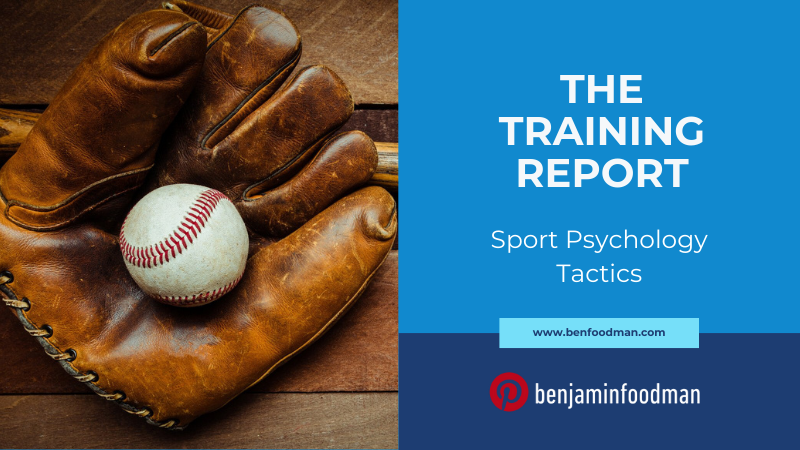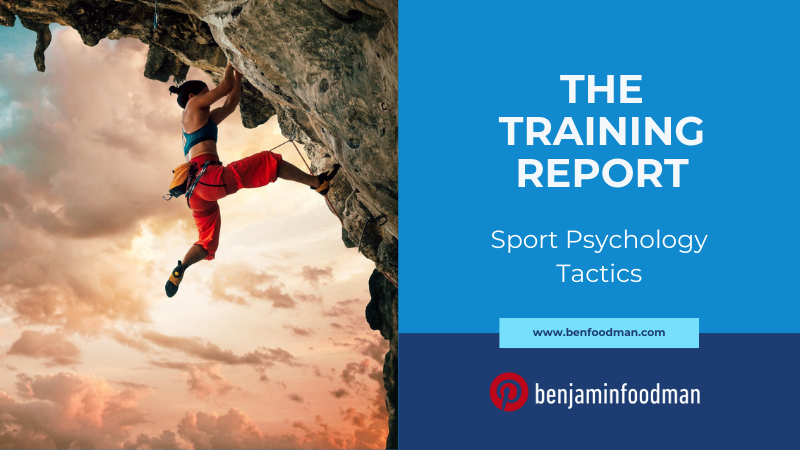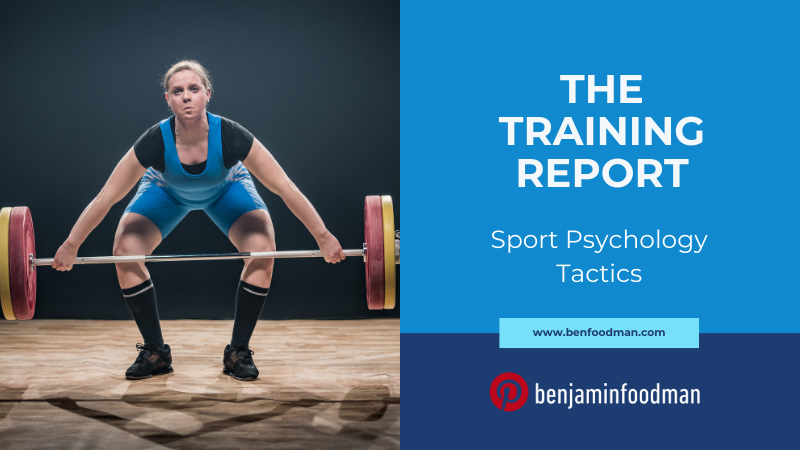Sport Psychology Tactics - Mental Training For Elite Auto Racers
About the Author
Ben Foodman is a licensed psychotherapist & performance specialist. He owns his private practice located in Charlotte North Carolina where he specializes in working with athletes to help them overcome mental blocks (the yips), PTSD, ADD / ADHD and achieve flow states through the techniques of Brainspotting & Neurofeedback. If you are interested in services, use the link here! Enjoy the article below!
Introduction: How Auto Racers & Sport Psychologists Use Mental Training
Professional racecar drivers compete in some of the most hostile sports environments. Whether drivers are competing in NASCAR, F1, Rallycross or GT racing, auto racers in all of these series have to be elite in nearly everything they do. The reason for this is because motorsports require near perfect psychological processing in coordination with peak physical conditioning abilities. Both the amount and speed at which information must be processed along with the brutal physical conditions of the car will not allow for any weaknesses. As such auto racers need to take their training to a whole new level to keep their superiors satisfied at allowing them to compete in the seats.
I am fortunate to be able to work with drivers that compete across many different series. Because of my time working with these athletes and their coaches I have gained important knowledge about mental training strategies that not only work well in auto racing, but translate well to other sports. For this issue of the Training Report I want to review what some of these strategies are. For part I. I will discuss introductory exercise psychology tactics drivers can use. In part II. I will review what quiet eye and motor learning strategies are relevant. Finally in part III. I will review a new intervention called Brainspotting and why it can be so effective for auto racers and staying ahead of the negative side effects of injury.
Part I. Exercise Psychology Training For Auto Racers
Through my experience working with auto racers in different series I have found that on average drivers burn anywhere between 2000-5000 calories throughout a race. Why is this the case? First, the intense heat inside the car puts incredible strain on the body. We know from psychological research that when people remain in a baseline state, our brains on average consume around 25% of all energy reserves in our body despite our brains only encompassing about 2% of our total bodyweight…that’s basically ‘keeping the lights on’. When you start introducing the psychological strain that is placed on drivers during racing, the energy consumption goes up. The information processing that the brain undergoes in addition to the physical strain of heat within the car, followed by static muscle positions when holding the steering wheel in the cockpit extract significant amounts of energy and stress the cardiovascular system. Additionally, most if not all drivers experience collisions or crashes during races which can result in head trauma and concussions. Based on my experience, the best exercise psychology strategies that these athletes use that all athletes would benefit from is a prehab focused strategy.
There are many different definitions and interpretations of what ‘prehab’ is. In the book The 4-Hour Body by Timothy Ferris the author quite simply defines prehab as ‘injury-proofing- the body. You could make the argument that all strength & conditioning is ‘injury-proofing’ the body, but when speaking with different exercise science professionals and biomechanists, most of these individuals consider prehab to be a combination of strength training with physical-therapy style focused exercises. In Mr. Ferris’s book, he provides an example of how prehab specialists think about this issue: According to Gray the most likely cause of injury is neither weakness nor tightness, but imbalance. Think doing crunches or isolated ab work is enough to work your core muscles? Think again. ‘The core, as just one example, often works find as long as one’s hips aren’t moving. It’s when the hips are moving-a more realistic scenario-that the core starts to compensate for left-right differences.’ That’s when you get injured.
Other experts in the field provide similar content to support the need to focus on these types of interventions. In the book Becoming A Supple Leopard by Dr. Kelly Starrett, the following excerpt provides additional rational for this type of thinking: Prioritizing spinal mechanics is the first and most important step in rebuilding and ingraining functional motor patterns, optimizing movement efficiency, maximizing force production, and avoiding injury. In order to safely and effectively transmit force through your core and into your extremities, you need to organize your spine in a neutral position and then crease stability throughout that organized system by engaging the musculature of your trunk, which is knowns as bracing. This is the basis of midline stabilization and organization. To oversimplify this, if you are a professional racecar driver (or any athlete for that matter) and your body is in pain, aching or your HRV is not in a good state, your mental focus will be compromised and you will have a lot of disappointing performances. Taking a prehab style approach that focuses on things such as neck training, pelvic floor activation, and symmetry throughout the body should be important points of focus and will address both the physical and mental side of performance.
Part II. Racecar Drivers, Quiet Eye & Motor Learning Training
One form of training that I have placed heavy emphasis on is quiet eye training. In the book Motor Learning And Performance by Richard Schmidt and Craig Wrisberg, the authors provide an excerpt that helps explain the importance of focal vision and the quiet eye phenomenon. The authors state the following: An important challenge for scientists is determining how performers use vision to control their movements. Research by Vickers (1996) suggests that an important difference in the visual control of expert and nonexpert performers is a pre-execution period of visual fixation Vickers called the ‘quiet eye’. The four characteristics of quiet eye are a directing of attention to a critical location or target in the performance environment, an onset that occurs prior to the intended movement, a duration that is longer for elite performers than for those of lesser skill levels, and of course a high level of stability. Recent research examining the quiet eye phenomenon has substantiated Vickers’ predictions and shown that preperformance visual fixations are fewer and longer but cease earlier (as the movement is being executed) for highly skilled than for lesser skilled performers in closed skills such as basketball shooting, billiards, and small-bore rifle shooting, as well as in open skills such as goaltending in ice hockey.
The authors continue: IN the study by Janelle and colleagues (2000), participants attempted 40 rounds of target shooting on a simulator. In addition to recording shot accuracy and duration of aiming, the researchers obtained eye-movement and brain-wave data that allowed them to estimate visual gaze behavior of the shooters. Performance accuracy was significantly higher and the visual fixation period preceding shot execution longer for experts than for non-experts. Brain wave results also indicated superior engagement of visuospatial resources by experts compared with nonexperts. The results of all these studies suggest that superior performance in some close and open skill situations is attributable in part to the performer’s capability of achieving a fixation of the eye (i.e. quiet eye) prior to movement execution. While auto racers compete in an open-skills environment, eye placement and holding that eye placement is critical in many situations during performance. Quiet eye training is something that I have found to be a successful intervention with drivers as well as other athlete populations.
Part III. How Brainspotting Helps Whiplash Syndrome & Racecar Yips
Even with all of the safety features installed in racecars, drivers are still susceptible to the negative side effects of crashes. One of these negative side-effects is known as the Whiplash Syndrome. In the book The Body Bears The Burden by Robert Scaer, the author provides in great detail how we understand what Whiplash Syndrome is and how it affects individuals. The author states the following: Patients suffering from even a minor to moderate velocity rear-end MVA often suffer from a confusing variety of symptoms. Not only do they ‘have the typical complaints of headache and neck pain and stiffness, they also often complain of emotional symptoms, depression, and anxiety. Neurological complaints are common, ranging from dizziness and vertigo, ringing in the ears, blurred vision, fainting spells and balance difficulties to remarkable problems with thinking, concentration, and memory. Rather than making a steady recovery like a comparable sports-related accident, whiplash patients often pursue a slow, unpredictable course. They often take several years to improve, with episodic periods of worsening that don’t make sense when related to other types of soft tissue injuries. Long-term studies in whiplash patients in general show that a majority (70 to 80 percent) returned to normal activities in six months. On the other hand, in other studies, persistent chronic pain has been noted in 18 percent of victims at three years and up to 40 percent to ten years. Something to keep in mind about these studies are the fact that the participants were NOT professional racecar drivers. A common issue that I have run into when working with these athletes is that one of the side-effects of Whiplash Syndrome is that these drivers are at risk for developing what is known as the Yips.
Many sport psychologists commonly refer to the Yips as ‘Focal Dystonia’ in order to provide what appears to be a more clinical term on the surface. Other neuroscientists will refer to the Yips as a psychological phenomenon that is simply ‘random muscle spasms’ that occur to athletes in high pressure situations. The fact of the matter is that 99% of these so called ‘experts’ have it 100% incorrect. The yips are not random muscle spasms or ‘focal dystonia’. The yips are a defense mechanism that is produced when the athlete feels that they are at risk or unsafe. This theory was originally developed by Dr. David Grand, a former EMDR (Eye Movement & Desensitization Reprocessing) Trainer and founder of the new psychotherapy technique called Brainspotting. Through his work with elite athletes he eventually came to the correct conclusion that traditional sport psychology had it completely wrong when it came to understanding this issue. He recognized that the Yips could be understood through what is commonly known as a ‘trauma-informed’ perspective.
In the book This Is Your Brain On Sports by David Grand, the author goes into great detail to explain the neuroscience behind the sports-related stress and how the brain generates the Yips reflex responses. The author describes as follows ‘In parallel fashion, the brain attempts to always move toward a state of psychological equilibrium. Over the course of our lives, we are exposed to a variety of life experiences, some positive, some neutral, and some negative. Through a natural assimilation process, the brain adaptively processes these experiences so they are constructively integrated. What is useful from the experience is learned and stored in the brain with the appropriate emotion and is available for future use. When an experience is successfully assimilated or digested it is stored in the brain with little attached intense emotion or physical sensation. When we recall such an incident, we don’t reexperience the old emotion or sensation with it. In this way we are informed by our past experiences and memories but not controlled by them and with sports our present athletic performances are not burdened by emotional or physical baggage from the past, only learned experience. By contrast, trauma or any strongly negatively charged experience isn’t adequately assimilated or processed. Instead, the upsetting incident remains stuck in the system in broken pieces’.
The author continues, ‘ The body instantly memorizes the physical experience of the trauma in exquisite detail, including the body sensations of the impact and pain, along with the associated sights, sounds, smells and tastes. The attached emotions and where they are felt in the body are frozen as well. The brain is overwhelmed and instead of getting digested, all of the information attached to the injury, including the negative thoughts is stored in the brain in exactly the same form it was initially experienced. Days, week, months or even years later when the athlete is in a situation reminiscent of the original trauma or experiences prolonged stress, the upsetting experience may be unconsciously activated, thus interfering with the performance of the moment. These components represent all of the sensory details from the earlier event that were frozen in the brain and body in their original disturbing state: the images, lighting, emotions, physical movements, sounds, or smells. The unique sensory details later returning to consciousness cause the performance disrupting symptoms so common in mental blocks.’ All of this leads me to say that when helping auto racers that are dealing with the Yips (and other athlete populations that are dealing with the Yips), I have found that Brainspotting is by far and away the most effective tool at helping these athletes overcome this mental obstacle.
Brainspotting is a brain-based psychotherapy technique that utilizes the client’s field of vision to identify unresolved psychological issues. In Brainspotting we say ‘where you look affects how you feel’ and through this process clients have the ability to access the parts of their brain that traditional psychotherapy approaches such as cognitive behavioral therapy are unable to do. This results in clients being able to directly address the true ‘underlying’ issue (which we refer to as a Brain Spot) that has created conflict allowing individuals to move from needing to constantly cope, to not needing to cope at all. Brainspotting can be used to help anyone who is dealing with mental blocks, the yips, psychologically traumatic events, chronic pain issues from injuries, as well as individuals who are trying to access deeper levels of creativity or cultivating mental flow states. When we think about the potential issues that racecar drivers deal with such as concussions, TBIs, car crashes, witnessing colleagues crash, whiplash syndrome, sport humiliations, sports-injuries, out of sport trauma (e.g. car accidents, interpersonal relationship issues), it can be easy to see why this intervention pair perfectly with this athlete population.
The goal of all psychotherapy interventions are to help clients move from dysregulation to regulation. For instance if you are a racecar driver and you have been experiencing mental blocks such as increased pre-performance anxiety or fear responses, this can be considered a state of dysregulation. Because almost half of the brain is dedicated to vision, we use the client’s field of vision combined with focused mindfulness to help engage the regions of the brain that are responsible for regulation and bypass the regions that are not! This physiological approach can help clients achieve their desired psychological outcomes. When athletes work with a sport psychologist who uses Brainspotting, they will first identify what the issue is that they would like to resolve. These issues can range from experiencing pre-performance nerves in sports, to having anxiety about speaking in front of a team. Clients discuss the issue in-depth and then the sport psychologist invites clients to have their eyes follow a pointer that the clinician will move in certain directions to identify the eye position that is relevant to the topic that the client is looking to resolve. Once the eye position is identified, the client will hold that eye position for either several minutes up to two hours potentially until the issue is resolved. Ultimately, elite athletes need to understand that injury is an inevitable part of sport, which means you will need to inevitably deal with the side-effects of those injuries. From my perspective (and the drivers I have had the honor of working with) Brainspotting is a form of mental training that is integral to peak performance. If you would like to learn more, please use this link!
Note To Reader:
If you are an athlete reading this segment of the TRAINING REPORT, hopefully this content was helpful! I put the Training Report together because I felt like many of the discussions on issues such as the Yips/mental blocks, strength training & other subject matter on athlete performance concepts were really missing the mark on these ideas (e.g. how trauma is the direct cause of the Yips). If you are interested in learning more, make sure to subscribe below for when I put out new content on issues related to sport psychology & athlete performance! Also, if you are looking to work with a mental performance specialist, you are in the right place! USE THIS LINK to reach out to me to see if my services are the right fit for your goals!
ARE YOU ON THE LIST?
Make sure you’re signed up to Ben’s mailing list to receive news & updates on new strategies in sport psychology, upcoming workshops & products. Don’t wait, sign up now!

















































































